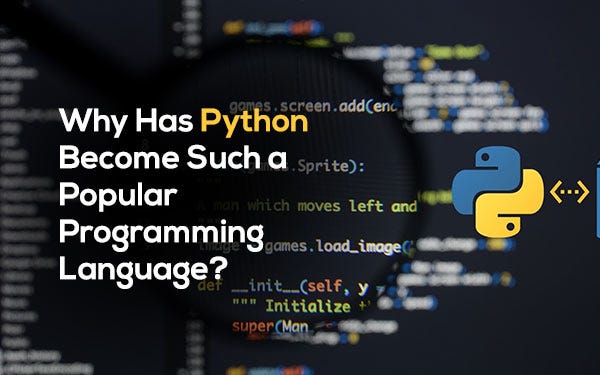How Real-World Companies Use Python: Case Studies of Success
Python has become one of the most versatile programming languages across industries. From fintech to tech giants, companies rely on Python for everything from data analytics to automation. In this blog, I’ll walk through real-world scenarios where Python was pivotal in solving significant business challenges, with case studies from companies across different sectors.

1. Netflix: Revolutionizing Content Recommendations with Python
Year: 2017
Scenario:
As Netflix expanded globally, the sheer volume of user data presented a problem. Netflix needed to refine its recommendation system to ensure users could discover new shows and movies that matched their interests, which was key to keeping people engaged on the platform.
Challenge:
With millions of users watching diverse content across regions, Netflix had to deal with a massive amount of data, including viewing history, user interactions, preferences, and demographics. Processing this data in real-time and suggesting the right content at scale required a robust, scalable solution.
Solution with Python:
Netflix turned to Python for its ease of use and the wide array of libraries it offers for data processing, machine learning, and analysis. The team leveraged Python libraries like NumPy and SciPy to handle the mathematical aspects of the recommendation algorithm. For machine learning, they used SciKit-Learn, and for deep learning tasks, TensorFlow (Python’s wrapper) came in handy. Python’s flexibility also allowed them to experiment quickly with various models to find the best fit for user engagement.
2. Spotify: Enhancing User Experience with Data Analytics
Year: 2018
Scenario:
Spotify wanted to improve how they offered personalized playlists, such as “Discover Weekly.” They needed to analyze the listening habits of millions of users to curate content for each user. However, they faced the challenge of processing billions of data points in real-time.
Challenge:
Spotify had to balance between accuracy and speed. With every track played by millions of users, they needed to process data swiftly while ensuring that their recommendations stayed relevant and fresh. Scalability was also a concern as their user base was growing exponentially.
Solution with Python:
Spotify uses Python in its backend for data analysis and personalized recommendation services. With the help of Python’s Pandas library for data analysis and Luigi (a Python library) for building complex pipelines, Spotify streamlined its data workflow. The company also used PySpark (Python’s interface for Apache Spark) to handle the massive datasets involved. Python’s simplicity enabled Spotify to focus on algorithm development rather than the technical complexities of scaling their infrastructure.
3. Instagram: Scaling with Python
Year: 2016
Scenario:
As Instagram’s user base grew to over 500 million daily active users, the need to scale their infrastructure became a top priority. Instagram needed a solution that would enable them to manage this influx of users, photos, and interactions without sacrificing performance.
Challenge:
Instagram needed a framework that could handle millions of interactions per minute, ensuring that uploads, comments, likes, and notifications happened in real time. The challenge was also to ensure smooth performance across devices globally while managing an ever-growing database of user content.
Solution with Python:
Instagram chose Python to handle its backend, citing the language’s simplicity and strong ecosystem. Instagram’s engineering team uses Python frameworks like Django to manage their database and serve requests from the app. In 2016, the company adopted Python 3 for its speed improvements and better concurrency handling. Python’s ability to integrate with C libraries for CPU-intensive tasks helped Instagram maintain high performance even as their user base soared.
4. Dropbox: Python at the Core of File Synchronization
Year: 2015
Scenario:
Dropbox, a cloud-based file storage platform, needed a way to ensure that files were synchronized across devices seamlessly. With millions of users storing and sharing files, any lag or failure in synchronization could lead to significant data loss or dissatisfaction.
Challenge:
Ensuring file consistency and synchronization across different devices and operating systems was complex. Dropbox needed a robust solution that would not only handle large-scale file management but also support cross-platform development and maintenance.
Solution with Python:
From its inception, Dropbox has been built on Python, with the language being used in everything from the desktop client to backend services. Python’s cross-platform capabilities made it easy for Dropbox to write code that worked on both Windows and macOS, simplifying development. Dropbox also took advantage of Python’s networking libraries, like Twisted, for handling synchronization across devices.
Dropbox’s team has consistently contributed to the Python ecosystem, developing and optimizing their infrastructure with Python as the core programming language. In 2015, the company began upgrading to Python 3 to enhance the performance and scalability of its service.
5. Airbnb: Streamlining Dynamic Pricing with Python
Year: 2019
Scenario:
Airbnb faced a critical challenge in helping hosts set the best possible price for their listings. The company needed to create a pricing model that would dynamically adjust based on factors like location, seasonality, demand, and competitor pricing.
Challenge:
The sheer number of factors influencing pricing made it difficult for hosts to determine the ideal rate manually. Airbnb required a solution that could process real-time data from thousands of locations and listings while offering personalized recommendations to hosts.
Solution with Python:
Airbnb utilized Python for its data science and machine learning needs, particularly using it to build its dynamic pricing model. The data team used Python’s Pandas library to clean and analyze data and implemented machine learning models using SciKit-Learn and XGBoost (both Python-based libraries). Python’s flexibility allowed Airbnb to test different models quickly, fine-tune them, and deploy them into production with minimal overhead.
Conclusion
These real-world examples show Python’s power and flexibility in diverse industries. From enhancing recommendations at Netflix to scaling systems at Instagram, Python has proven to be an indispensable tool for companies looking to solve complex problems. Its simplicity, coupled with powerful libraries for data science, machine learning, and automation, makes it the language of choice for many tech giants today.
